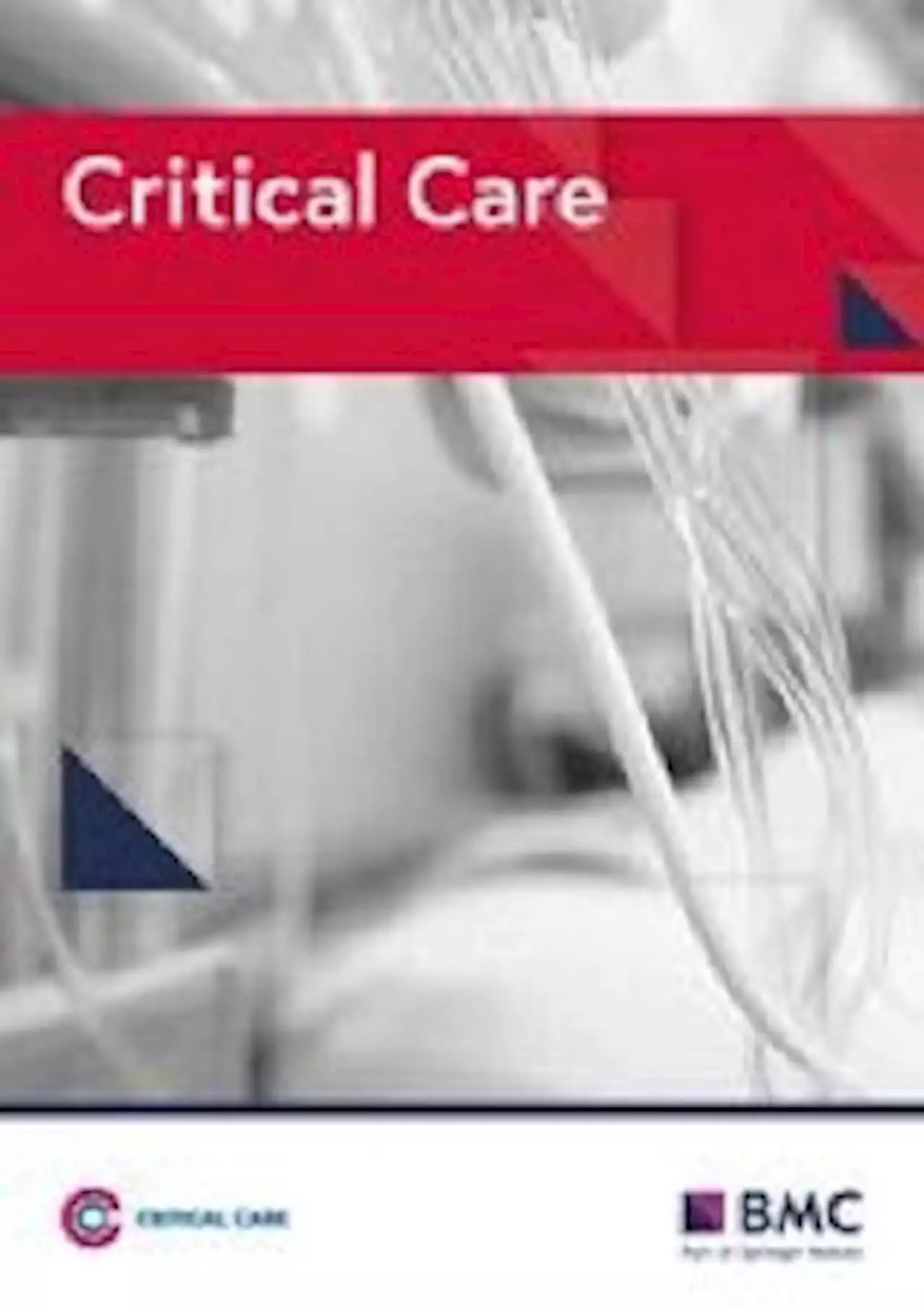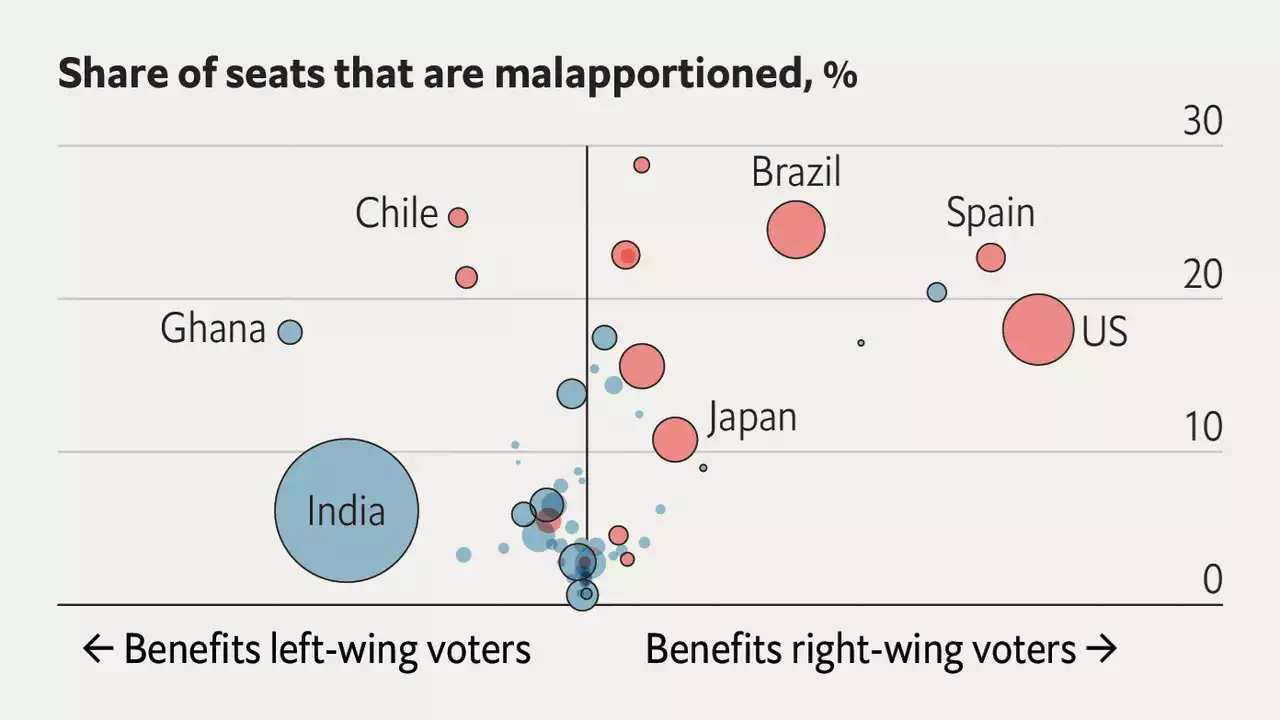Imbalances like those in America’s Congress are common in countries with bicameral legislatures
Americans often bemoan their country’s Senate, in which each state gets two seats regardless of population. This has always given the least populous states extra sway in the upper chamber of Congress. But in recent years, smaller states have become more Republican, and Democrats have called for reform.
Relative to parliaments elected by proportional representation, a method that matches shares of seats and votes, America’s Congress looks badly malapportioned. But many countries, seeking to ensure that regional interests are heard, use systems that represent both places and people. And according to a new working paper by Pablo Beramendi, Carles Boix, Marc Guinjoan and Melissa Rogers, all political scientists, imbalances like America’s are common in countries with bicameral legislatures.
The authors measured malapportionment, defined as the gap between districts’ shares of seats and eligible voters, in 247 elections across 65 countries. Just like the United States, the worst offenders, mainly in South America, give each state or province equal weight in the upper house.
The conservative bias of America’s Senate also reflects a trend. Combining four different databases of ideology scores for political parties, the authors assessed how much malapportionment favoured the left or right in each country. In general, the authors found that right-leaning voters had disproportionate sway in upper houses, albeit with exceptions like Australia’s and Chile’s. There was no such skew in lower houses, in which seats and votes were usually better-aligned.
The data yield two conclusions for reformers. Left-wing parties should be wary of systems with powerful upper houses. And some countries with mixed-member parliaments, like Germany, avoid malapportionment while still providing geographic representation. The interests of places and people need not be at odds.
United States Latest News, United States Headlines
Similar News:You can also read news stories similar to this one that we have collected from other news sources.
 Extra pounds put kids at higher risk for hypertension, shows studyA Kaiser Permanente study of more than 800,000 young people between the ages of 3 and 17 showed that youth at the upper range of average weight had a 26% higher risk of developing hypertension than those closer to what is considered average weight. The study was published March 14, 2023, in JAMA Network Open.
Extra pounds put kids at higher risk for hypertension, shows studyA Kaiser Permanente study of more than 800,000 young people between the ages of 3 and 17 showed that youth at the upper range of average weight had a 26% higher risk of developing hypertension than those closer to what is considered average weight. The study was published March 14, 2023, in JAMA Network Open.
Read more »
 Intravenous methylprednisolone pulse therapy and the risk of in-hospital mortality among acute COVID-19 patients: Nationwide clinical cohort study - Critical CareBackground Steroids are widely used to modulate the inflammatory reactions associated with coronavirus disease 2019 (COVID-19); however, the optimal upper limit dose of steroid use for acute COVID-19 care remains unclear and currently available data may suffer from a time-dependent bias of no effectiveness or reversed causation given the desperate situation of treatment during this pandemic. Accordingly, the aim of this study was to elucidate the impact of intravenous pulse therapy with methylprednisolone (500 mg or greater per day) on the risk of in-hospital mortality among patients with COVID-19 by controlling for time-dependent bias. Methods We performed a prospective cohort study with 67,348 hospitalised acute COVID-19 patients at 438 hospitals during 2020–2021 in Japan. The impact of intravenous methylprednisolone pulse therapy on the risk of in-hospital mortality was examined based on hazard ratios (HRs) and 95% confidence intervals (95% CIs), with stratification according to the status of invasive mechanical ventilation (iMV). Time-dependent bias was controlled for in a marginal structural model analysis, with reference to patients without methylprednisolone therapy. Results During the study period, 2400 patients died. In-hospital mortality rates of iMV-free patients without or with methylprednisolone pulse therapy were 2.3% and 19.5%, and the corresponding values for iMV-receiving patients were 24.7% and 28.6%, respectively. The marginal structural model analysis showed that intravenous pulse therapy with methylprednisolone was associated with a lower risk of in-hospital mortality among patients receiving-iMV (HR 0.59; 95% CI 0.52–0.68). In contrast, pulse therapy with methylprednisolone increased the risk of in-hospital mortality among iMV-free patients (HR 3.38; 95% CI 3.02–3.79). The benefits of pulse therapy for iMV-receiving patients were greater than in those treated with intermediate/higher doses (40–250 mg intravenously) of methylprednisolone (HR 0.8
Intravenous methylprednisolone pulse therapy and the risk of in-hospital mortality among acute COVID-19 patients: Nationwide clinical cohort study - Critical CareBackground Steroids are widely used to modulate the inflammatory reactions associated with coronavirus disease 2019 (COVID-19); however, the optimal upper limit dose of steroid use for acute COVID-19 care remains unclear and currently available data may suffer from a time-dependent bias of no effectiveness or reversed causation given the desperate situation of treatment during this pandemic. Accordingly, the aim of this study was to elucidate the impact of intravenous pulse therapy with methylprednisolone (500 mg or greater per day) on the risk of in-hospital mortality among patients with COVID-19 by controlling for time-dependent bias. Methods We performed a prospective cohort study with 67,348 hospitalised acute COVID-19 patients at 438 hospitals during 2020–2021 in Japan. The impact of intravenous methylprednisolone pulse therapy on the risk of in-hospital mortality was examined based on hazard ratios (HRs) and 95% confidence intervals (95% CIs), with stratification according to the status of invasive mechanical ventilation (iMV). Time-dependent bias was controlled for in a marginal structural model analysis, with reference to patients without methylprednisolone therapy. Results During the study period, 2400 patients died. In-hospital mortality rates of iMV-free patients without or with methylprednisolone pulse therapy were 2.3% and 19.5%, and the corresponding values for iMV-receiving patients were 24.7% and 28.6%, respectively. The marginal structural model analysis showed that intravenous pulse therapy with methylprednisolone was associated with a lower risk of in-hospital mortality among patients receiving-iMV (HR 0.59; 95% CI 0.52–0.68). In contrast, pulse therapy with methylprednisolone increased the risk of in-hospital mortality among iMV-free patients (HR 3.38; 95% CI 3.02–3.79). The benefits of pulse therapy for iMV-receiving patients were greater than in those treated with intermediate/higher doses (40–250 mg intravenously) of methylprednisolone (HR 0.8
Read more »
 House bought on 'UK's most dangerous street' for £5,000 is now worth £1,000,000A man who bought his house on the country’s ‘most dangerous street’ in 1970 for just £5,000 says it’s now worth £1 million.
House bought on 'UK's most dangerous street' for £5,000 is now worth £1,000,000A man who bought his house on the country’s ‘most dangerous street’ in 1970 for just £5,000 says it’s now worth £1 million.
Read more »
 Hero dad forces way into burning house to rescue five dogs trapped insideHero dad forces way into burning house to rescue five terrified dogs trapped inside
Hero dad forces way into burning house to rescue five dogs trapped insideHero dad forces way into burning house to rescue five terrified dogs trapped inside
Read more »
 Khanna Schultz’s House in Michigan is an exercise in balancing contrastsHouse in Michigan by Khanna Schultz was conceived to fulfil contrasting needs – and does so with poise and efficiency
Khanna Schultz’s House in Michigan is an exercise in balancing contrastsHouse in Michigan by Khanna Schultz was conceived to fulfil contrasting needs – and does so with poise and efficiency
Read more »
